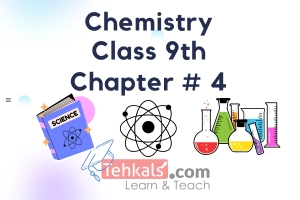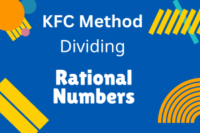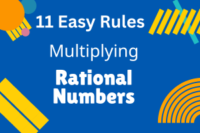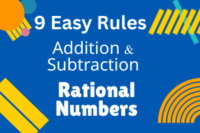Chemistry Class 9 Chapter 3
Published: 3 Sep 2023
Chemistry Class 9 Chapter 3 is about the “Periodic Table and Periodicity of Properties.” This article includes topics such as the Periodic Table, Modern Periodic Table, Periods & Groups in the Periodic Table, Periodicity of Properties, Atomic Size, Atomic Radius, Covalent Radii, Ionization Energy, Electron Affinity, Shielding Effect and Electronegativity.
Chemistry Class 9 Chapter 3 Notes
Chemistry 9th Class Chapter 3
Periodic Table and Periodicity of Properties
Chemistry Class 9 Chapter 3-MCQs
Periodic Table
1. In the year 1800 , only ___________ elements were known.(a) 34
(b) 38
(c) 42
(d) 46
Show Answer
34
2. By the year ___________ about 68 elements were known.
(a) 1800
(b) 1820
(c) 1840
(d) 1870
Show Answer
1870
3. Till 1974, there were total ___________ elements present.
(a) 85
(b) 100
(c) 105
(d) 120
Show Answer
105
4. At present ___________ elements are known till date.
(a) 118
(b) 108
(c) 128
(d) 201
Show Answer
118
5. Out of 118 elements, ___________ were naturally occurring elements.
(a) 105
(b) 38
(c) 92
(d) 68
Show Answer
92
6. In periodic table, 26 elements are ___________.
(a) Natural
(b) Artificial
(c) None
(d) Complex
Show Answer
Artificial
7. Many chemists, including Lavoisier (1787), Newlands (1864) attempted to classify the elements___________.
(a) systematically
(b) Vertically
(c) Originally
(d) Horizontally
Show Answer
systematically
8. In 1869, Russian chemist Mendeleev made the most successful classification based on ___________ of the element.
(a) Atomic number
(b) Atomic mass
(c) Radicals
(d) Masses
Show Answer
Atomic mass
9. Initially, elements were divided into metals and ___________.
(a) Transition element
(b) Lanthanide series
(c) Non-metal
(d) Radical
Show Answer
Non-metal
10. In 1964, an English chemist J.Newland classified the elements in order of ___________atomic masses.
(a) Increasing
(b) Decreasing
(c) Constant
(d) Same
Show Answer
Increasing
11. In 1869, Dimitri Mendeleev arranged _________elements in periods and groups.
(a) 65
(b) 68
(c) 75
(d) 63
Show Answer
65
Modern Periodic Table
12. The modern periodic table was put forward by:(a) Mendeleev
(b) Newlands
(c) Henry Moseley
(d) Rutherford
Show Answer
Henry Moseley
13. Modern periodic table is based on _________.
(a) Atomic mass
(b) Atomic number
(c) Valency
(d) Last shell
Show Answer
Atomic number
14. The modern periodic law states that, “ the physical and chemical properties of elements are the periodic _________ of their atomic number”.
(a) Function
(b) Law
(c) Octave
(d) Valence
Show Answer
Function
Periods in Periodic Table
15. The _________rows of elements in periodic table are called periods.(a) Vertical
(b) Horizontal
(c) Planner
(d) First
Show Answer
Horizontal
16. There are total _________periods in periodic table.
(a) 3
(b) 5
(c) 7
(d) 11
Show Answer
7
17. All the elements in the same period have the same number of electronic _________.
(a) Shells
(b) Orbit
(c) Energy levels
(d) All
Show Answer
All
18. The first period contain _________ electronic shell.
(a) 1
(b) 3
(c) 2
(d) 4
Show Answer
1
19. The second period contains _________electronic shells.
(a) 1
(b) 3
(c) 2
(d) 4
Show Answer
2
20. The third period contains ________ electronic shells.
(a) 1
(b) 3
(c) 2
(d) 4
Show Answer
3
21. The first period contain two elements i.e hydrogen and _________.
(a) Argon
(b) Lithium
(c) Helium
(d) Carbon
Show Answer
Helium
22. The first period is also called the _________ period of periodic table.
(a) Shortest
(b) Longest
(c) Average
(d) Constant
Show Answer
Shortest
23. 2nd and 3rd period each contain _________elements and are called short periods.
(a) 18
(b) 8
(c) 17
(d) 7
Show Answer
8
24. The 4th and 5th periods have _________elements each.
(a) 18
(b) 8
(c) 17
(d) 7
Show Answer
18
25. In 4th and 5th period, 8 elements are called_________elements.
(a) Transition
(b) Representative
(c) Alkali
(d) Alkaline
Show Answer
Representative
26. In 4th and 5th period, 10 elements are called _________elements.
(a) Transition
(b) Representative
(c) Alkali
(d) Alkaline
Show Answer
Transition
27. The 6th period contains _________ elements.
(a) 64
(b) 32
(c) 25
(d) 20
Show Answer
32
28. In 6th period, there are _________ representative elements.
(a) 8
(b) 14
(c) 20
(d) 26
Show Answer
8
29. The 6th period have_________ transition elements.
(a) 8
(b) 14
(c) 10
(d) 20
Show Answer
10
30. In 6th period, the 14 elements of _________ series.
(a) Lanthanide
(b) Actinide
(c) Hydranite
(d) None
Show Answer
Lanthanide
31. 7th period also has 8 representative elements, 10 transition elements and 14 elements of _________ series.
(a) Lanthanide
(b) Actinide
(c) Halogens
(d) None
Show Answer
Actinide
To Download Complete Notes of Class 9 Chemistry Notes, Click the link.
Groups in Periodic Table
32. The vertical column of elements in periodic table is called_______________.(a) Periods
(b) traids
(c) Groups
(d) None of these
Show Answer
Groups
33. The groups in periodic table are numbered from:
(a) A to H
(b) I to VIII
(c) I to X
(d) A to G
Show Answer
I to VIII
34. Elements in the same group have same number of ___________in the outermost shell of the atom.
(a) electrons
(b) Proton
(c) Neutrons
(d) Mass number
Show Answer
electrons
35. Because of similarity in number of valance electrons, elements show resemblance in their ____________ properties in the same group.
(a) Physical
(b) Chemical
(c) Biological
(d) Electrical
Show Answer
Chemical
36. The first group elements possess only __________valance electron.
(a) one
(b) Two
(c) Three
(d) Four
Show Answer
one
37. Group 1st elements are _________ .
(a) Less reactive
(b) Very reactive
(c) Non-reactive
(d) Constant
Show Answer
Very reactive
38. Group 1st elements are __________ in nature and show metallic character.
(a) Electropositive
(b) Electronegative
(c) Stable
(d) Electric field
Show Answer
Electropositive
39. Group 1st elements are also called_________________.
(a) Noble metals
(b) Alkali metals
(c) Transition
(d) Halogen group
Show Answer
Alkali metals
40 Beryllium, Magnesium and calcium belongs to:
(a) Group V
(b) Group II
(c) Group VII
(d) Group III
Show Answer
Group II
41. Elements of group II are also called _____________ metals.
(a) Alkaline earth
(b) Alkali
(c) Nitrogen family
(d) Hydrogen family
Show Answer
Alkaline earth
42. Elements in group 2nd possess ____________ valance electrons.
(a) One
(b) Two
(c) Three
(d) Four
Show Answer
Two
43. Group 2nd elements are ____________ electropositive than alkali metals.
(a) Same as
(b) More
(c) less
(d) Grater
Show Answer
less
44. Group III is called ____________ family.
(a) Carbon
(b) Boron
(c) Nitrogen
(d) Carbon
Show Answer
Boron
45. Elements of Group 3rd have ____________ valance electrons.
(a) One
(b) Two
(c) three
(d) Five
Show Answer
three
46. Group IV is called ____________ family, having four valance electrons.
(a) Carbon
(b) Metal
(c) Nitrogen
(d) Hydrogen
Show Answer
Carbon
47. Group V is called ____________ family, having 5 valance electrons.
(a) Carbon
(b) Metal
(c) Nitrogen
(d) Helium
Show Answer
Nitrogen
48. Group VI is called ____________family, having 6 valance electrons.
(a) Oxygen
(b) Metal
(c) Boron
(d) Iron
Show Answer
Oxygen
49. The seventh group in periodic table is ____________.
(a) Noble
(b) Halogens
(c) Alkali metals
(d) Carbon
Show Answer
Halogens
50. Halogens have _____________ electrons in valance shell.
(a) Eleven
(b) Nine
(c) 7 seven
(d) Four
Show Answer
7 seven
51. Halogens need ____________ electron to complete its octet.
(a) One
(b) Five
(c) Six
(d) Seven
Show Answer
One
52. Halogens are very ____________ and show non-metallic character.
(a) Electropositive
(b) Electronegative
(c) Mass number
(d) None
Show Answer
Electronegative
53. The 8th group is called _______ gases.
(a) Noble
(b) Hydrocarbon
(c) Lanthanide
(d) Actinide
Show Answer
Noble
54. They have two or __________ electrons in their valance shell.
(a) Two
(b) Five
(c) eight
(d) One
Show Answer
eight
55. Group one and two elements are called ____________ elements.
(a) S-block
(b) P-block
(c) d-block
(d) b-block
Show Answer
S-block
56. All S-block and P-block elements are called ____________ elements.
(a) Transition
(b) Representative
(c) Traids
(d) None
Show Answer
Representative
57. Lanthanide and actinide series are called ____________ elements.
(a) f-block
(b) S-block
(c) P-block
(d) N-block
Show Answer
f-block
Periodicity of Properties
58. A pattern of repeating properties at regular interval is called ____________.(a) Periodicity
(b) Aromaticity
(c) Electronegativity
(d) Electropositivity
Show Answer
Periodicity
59. The process by which there is __________ of properties in all group and periods after certain interval are called periodicity of properties.
(a) Repulsion
(b) repetition
(c) Exclusion
(d) Inclusion
Show Answer
repetition
Atomic Size
Atomic Radii
Covalent Radii
60 The size of the atom is :(a) Fixed
(b) Not fixed
(c) Constant
(d) Flexible
Show Answer
Not fixed
61 The distance between the nucleus and the valance shell of the atom is called____________.
(a) Atomic radius
(b) Atomic size
(c) Atomic mass
(d) Atomic number
Show Answer
Atomic radius
62. The atomic radius is represented by ____________.
(a) R
(b) Ar
(c) r
(d) None
Show Answer
r
63. Atomic radius is ____________ proportional to no of shells.
(a) Directly
(b) Inversely
(c) Constant
(d) Indirect
Show Answer
Directly
64. Atomic radius is expressed in ____________.
(a) Dm,km
(b) nm, pm
(c) km, pm
(d) Qm, rm
Show Answer
nm, pm
65. Atomic radius ____________ in groups from top to bottom.
(a) Decrease
(b) No change
(c) increase
(d) None
Show Answer
increase
66. Atomic radius decrease in period from ____________.
(a) Left to right
(b) Right to left
(c) Up to down
(d) Up to left
Show Answer
Left to right
67. The decrease of atomic radius in periods is due to ____________ of electrons in same shell.
(a) Removal
(b) addition
(c) Variable
(d) Constant
Show Answer
addition
68. The one half of the distance between nuclei of two similar atoms of same molecule containing ____________ covalent bond.
(a) Triple
(b) Double
(c) single
(d) Fourth
Show Answer
single
69. The general formula of covalent radius is :
(a) $ d/2 $
(b) $ 2 / d $
(c) $ 1/ 2 D $
(d) $ 3/ 2 $
Show Answer
d/2
70. Covalent radii of $ F_2 $ molecule is ;
(a) 199 pm
(b) 143pm
(c) 228pm
(d) 271pm
Show Answer
143pm
Ionization Energy
71. The minimum energy required to remove the valance electron from valence shell to form ____________ is called ionization energy.(a) Positive ion
(b) Negative ion
(c) Radical
(d) Constant
Show Answer
Positive ion
72. When the electron is completely removed from valance shell, the process is called____________.
(a) Fractionation
(b) Distillation
(c) ionization
(d) Filtration
Show Answer
ionization
73. The process of ionization needs____________.
(a) Matter
(b) energy
(c) Electron affinity
(d) Electrical positivity
Show Answer
energy
74. Ionization energy of an elements is measured in:
(a) Joules
(b) Frequency
(c) Hertz
(d) Galvin
Show Answer
Joules
75. The first ionization energy of sodium is:
(a) $ +1450 kj/mol $
(b) $ +496 kj/mol $
(c) $ +738 kj/mol $
(d) $ +630 kj/mol $
Show Answer
$ +496 kj/mol $
76. Ionization energy depends upon all Except:
(a) Atomic radius
(b) Nuclear charge
(c) Shielding effect
(d) Dative bond
Show Answer
Dative bond
77. Ionization energy ____________ as we move down the group.
(a) Decrease
(b) Increase
(c) Constant
(d) Equal
Show Answer
Decrease
78. Ionization energy_________ in period from left to right.
(a) Decrease
(b) Increase
(c) Constant
(d) Equal
Show Answer
Increase
Electron Affinity
79. The minimum amount of energy released when an electron is added to valance shell of the atom to form _________ is called electron affinity.(a) Anion
(b) Radical
(c) Cation
(d) None
Show Answer
Anion
80. Electron affinity is expressed in _________.
(a) E
(b) A
(c) E.A
(d) A.E
Show Answer
E.A
81. Electron affinity is represented by _________.
(a) $ dm^3 $
(b) kj/mol
(c) $ N_A $
(d) $ M_N $
Show Answer
kj/mol
82. Electron affinity means love for _________electrons.
(a) Keeping
(b) Donating
(c) Accepting
(d) Losing
Show Answer
Accepting
83. The electron affinity of “Cl” is _________kj/mol.
(a) $ -348 kj/mol $
(b) $ +348 kj/mol $
(c) $ -843 kj/mol $
(d) $ -748 kj/mol $
Show Answer
$ -348 kj/mol $
84. The electron affinity _________ in a group from top to bottom.
(a) Increase
(b) decreases
(c) No change
(d) Equal
Show Answer
decreases
85. The electron affinity _________in a period from left to right.
(a) increase
(b) Decrease
(c) No change
(d) Equal
Show Answer
increase
Shielding Effect
86. Electrons in an atom are distributed in _________.(a) Same shell
(b) Different shell
(c) Nucleus
(d) Last shell
Show Answer
Different shell
87. The inner electrons shield the outer electron from the nuclear charge and reduce hold of the nucleus on these valance electrons. This effect is called_________.
(a) Shielding effect
(b) Screening effect
(c) Allotropy
(d) Both a and b
Show Answer
Both a and b
88. The shielding effect _________, when we move from left to right in a period.
(a) increase
(b) Decrease
(c) Remains same
(d) None
Show Answer
increase
Electronegativity
89. The ability of an atom to ________ shared pair of electron towards itself is called electronegativity.(a) Repel
(b) attract
(c) Share
(d) Gain
Show Answer
attract
90. The attraction of shared pair electron in electronegativitywill occur in _________ bond.
(a) Ionic
(b) Metallic
(c) covalent
(d) Organic
Show Answer
covalent
91. In a covalent bond, two atoms involve in _________, mutually share their electrons.
(a) Bond formation
(b) Electron donation
(c) Nucleons
(d) Protons
Show Answer
Bond formation
92. Electronegativity is represented by_________.
(a) E
(b) E
(c) E.N
(d) none
Show Answer
E.N
93. The following factors affect electronegativity Except:
(a) Mobility
(b) Nuclear charge
(c) Shielding effect
(d) Atomic radius
Show Answer
Mobility
94. The electronegativity _________ in groups from top to bottom.
(a) Increase
(b) decrease
(c) Constant
(d) None
Show Answer
decrease
95. Electronegativity _________ in periods form left to right.
(a) Increase
(b) Decrease
(c) Constant
(d) None
Show Answer
Increase
96. The most electronegative element in periodic table is_________.
(a) Chlorine
(b) cesium
(c) Fluorine
(d) None
Show Answer
Fluorine
97. The least electronegative element in periodic table is:
(a) Chlorine
(b) Cesium
(c) Fluorine
(d) None
Show Answer
Cesium
98. The electronegativity of fluorine is
(a) $ 4.0 $
(b) $ 0.7 $
(c) $ 3.0 $
(d) $ 0.8 $
Show Answer
$ 4.0 $
99. The electronegativity of Cesium is:
(a) $ 4.0 $
(b) $ 0.7 $
(c) $ 3.0 $
(d) $ 0.8 $
Show Answer
$ 0.7 $
Review Exercise Chapter 3
100. Which one has the largest ionization energy?(a) Na
(b) Al
(c) H
(d) He
Show Answer
He
101. Which of the following elements is in the same family as fluorine:
(a) Silicon
(b) Antimony
(c) iodine
(d) Arsenic
Show Answer
iodine
102. Which of the following would have the smallest ionization energy:
(a) K
(b) P
(c) S
(d) Ca
Show Answer
K
103. An element has configuration 2, 8, 1. It belongs to, _________:
(a) Group I and III period
(b) Group III and I period
(c) Group I and VII period
(d) Group VII and III period
Show Answer
Group I and III period
104. Which of the following elements would be most similar to carbon:
(a) Nitrogen
(b) Boron
(c) Oxygen
(d) silicon
Show Answer
silicon
105. s-block elements are:
(a) metals
(b) Non-metal
(c) Metalloids
(d) Transition
Show Answer
metals
106. Which of the following would have the largest ionization energy:
(a) Na
(b) Al
(c) H
(d) He
Show Answer
He
107. Elements in a _________ have similar chemical properties:
(a) Period
(b) group
(c) Both a and b
(d) Neither a nor b
Show Answer
group
108. An element has 8 electrons in its valence shell. It is a member of:
(a) Alkali family
(b) Halogen family
(c) Noble family
(d) Carbon family
Show Answer
Noble family
109. The modern periodic table is based on:
(a) Atomic number
(b) Mass number
(c) Neutron number
(d) Isotope number
Show Answer
Atomic number
110. Shielding effect is due to:
(a) Neutron
(b) Proton
(c) Proton and neutron
(d) electron
Show Answer
electron
Chemistry Class 9 MCQs (All Chapters)

- Be Respectful
- Stay Relevant
- Stay Positive
- True Feedback
- Encourage Discussion
- Avoid Spamming
- No Fake News
- Don't Copy-Paste
- No Personal Attacks



- Be Respectful
- Stay Relevant
- Stay Positive
- True Feedback
- Encourage Discussion
- Avoid Spamming
- No Fake News
- Don't Copy-Paste
- No Personal Attacks





